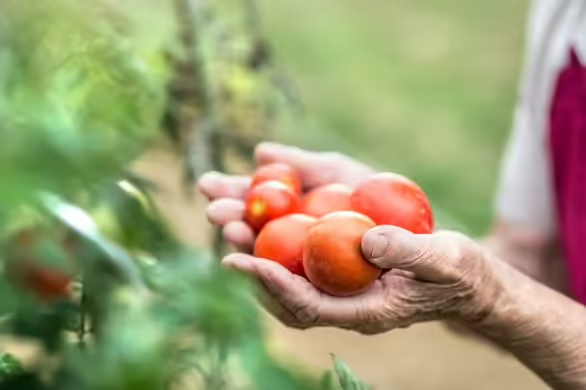
URBANA, Ill. – Gardeners may be familiar with the sense of calm and peace that can come from relaxing in a patch of fragrant and colorful flowers. It’s little wonder that the gardens have been harnessed for their therapeutic effects.
“Horticultural therapy is about people, not the plants,” says University of Wisconsin Extension Master Gardener Program director, Mike Maddox. Maddox has spent the latter part of his career teaching people how to connect to each other using gardens as their medium. He explains, “Plants have always been the cornerstone of our existence, they are in our DNA.”
In reality, we do share a quarter of our genes with the rice plant and we can learn about ourselves from studying their DNA. But more importantly, in horticultural therapy lingo, we have a natural connection to plants and want to learn more about them.
University of Illinois Extension horticulture educator Kelly Allsup developed a sensory garden program to promote the horticultural therapy concept and connect gardeners to nature. She demonstrates how much one uses their senses in the following imagination exercise.
“Imagine you are sitting in a garden. Any garden you can imagine. It can be a garden you have been in before, the garden of your dreams, or a pretend garden with purple trees.
“Look at the sky. What color is it? Look at the flowers. What kind are they? Oh look… Your favorite fruit is ready for picking. Is it an apple? Strawberry? Is it sweet?
“Now find a bench, sit, and rest. Do you feel the sun on your face? The breeze in your hair? You reach down to touch the leaves. Are they soft, fuzzy, smooth, or rough?
"What flowers do you smell? Do you smell the grass? Herbs? Soil? Water from the creek or fountain?
“What do you hear? A waterfall? Birds bursting into song? Bees buzzing, or squirrels scurrying? How do these sounds make you feel?
“You suddenly hear someone walking towards you. It can be anybody. Someone you have loved and lost. Someone you see every day. Someone who lives far away. Someone famous. Someone funny. Someone kind.
“They sit next to you on the bench to hold your hand.”
Kelly Allsup talks about her sensory garden program in this episode of Mid-American Gardener.
Was this imagination exercise fun, emotional, exciting, or intriguing? Thinking about the senses we use in a garden setting has caused some gardeners to reevaluate what they are planting. Gardeners are using plants to deepen their sensory experience of nature and some are using the sight, taste, feel, smell, and sound of the garden to repair their soul.
Therapy through nature and horticulture has been trending, as we become a more holistic society trying to reconnect to the natural world. Sensory plants may benefit gardeners with impaired sensory functions, children who have difficulty expressing themselves, people with disabilities, or some who just want a positive experience not created on a screen. “A gardener recently told me he didn’t care what the plant looked like anymore, but wanted to smell his garden,” Allsup recalls.
As you continue your gardening endeavors this season, think about some of the following plants that may enliven the senses.
For taste, plant flowers like stevia, daylilies, hibiscus, sunflowers, nasturtiums, and borage. Or plant vegetables like lettuce, swiss chard, peas, spinach, arugula, beet greens, chives, and herbs. Be sure the garden has not been sprayed with pesticides before nibbling.
For feel, plant annuals like sensitive plant, succulents, licorice plants, silver falls, dusty miller, and chenille plant. Or choose perennials like silver mound, lambs ear, fountain grass, and Irish moss.
For smell, pick herbs like rosemary, lemon verbena, lavender, chocolate mint, scented geraniums, and patchouli plant. Annuals like heliotrope, flowering tobacco, four-o-clocks, sweet alyssum, popcorn plants, and ageratum are good choices. Or plant perennials like viburnum, abelia, lilac, Plumeria, witch hazel, catmint, sweet shrub, and creeping phlox.
For sound, add grasses, wind chimes, water features, or a bird bath.
What senses are awakened when you walk through your garden? For more information on therapeutic horticulture provided by Mike Maddox please visit Theraputic Horticulture in Wisconsin.
Illinois Extension leads public outreach for University of Illinois by translating research into action plans that allow Illinois families, businesses, and community leaders to solve problems, make informed decisions, and adapt to changes and opportunities.